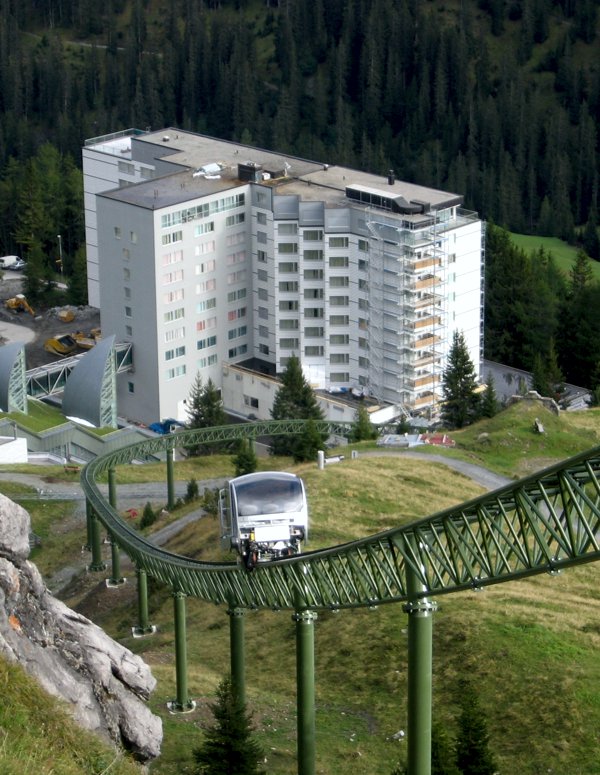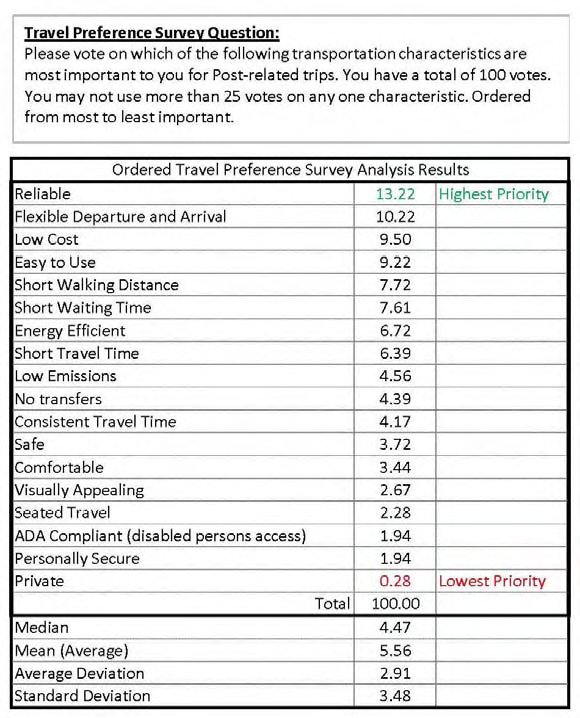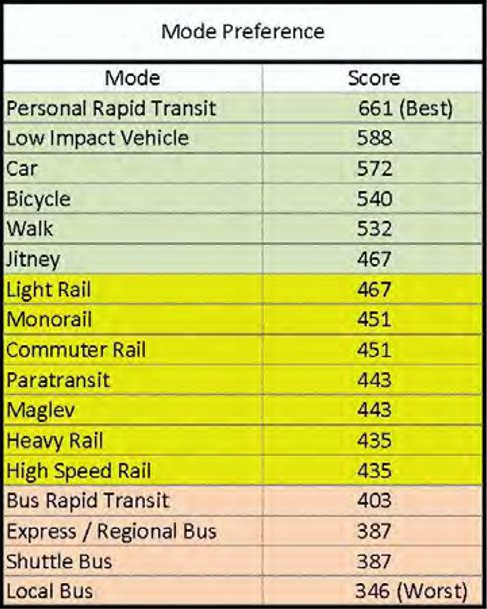
Any proposed PRT system that could suffer from adverse public comment, should have a well thought-out public outreach program. Public education and input should commence before there is any chance of members of the public learning about the project and becoming upset, because there are aspects of it they do not understand or that get misrepresented in the press. There are many instances of good public projects being stopped in their tracks by a vociferous minority.
Relatively new concepts, such as personal rapid transit (PRT), can be threatening to some. Experience has shown that one or two key people concerned about some aspect, such as visual intrusion of overhead guideways, can quickly derail a project. In addition, political leaders are often unsure about these types of projects and need feedback from the community in order to be assured they are doing the right thing. A community impact focus group meeting held early in the project development phase can provide the feedback necessary for the project to succeed. Even if the feedback is negative, it is better to learn this up front than at a later stage in the project.
The purpose of this workshop is to provide input regarding the community's values with respect to transportation options. The focus group will meet for one workshop of about four hours. The group should comprise a mix of stakeholders and public participants for a total of about 30 to 50 people. The stakeholders should include representatives of the oversight committee, local, planning and transit authorities and companies that may be impacted by the project results. Public participants should represent a broad range of people from the study area and should outnumber the stakeholder participants by at least two to one.
The proposed values-based methodology is designed to help local stakeholders choose the type of transportation systems they want, and to build strong consensus that the choices made are the correct ones and were made in a process that was as fair and unbiased as possible. The process itself is quite simple, but must be well executed to be successful. It will begin with public notices, advertisements, radio spots, etc., announcing that transportation solutions are being considered and seeking volunteers to participate in a 4-hour transportation workshop. The goal is to find 20 to 40 (or more) volunteers from all walks of life and parts of the community. At the same time, 10 to 20 representatives should be appointed - probably on the basis of one representative for each stakeholder organization.

The 4-hour workshop should be run by someone experienced in leading such events. It will commence with an introduction of modern Personal Rapid Transit and any other transportation technology the group may be unfamiliar with, such as bus rapid transit. This presentation is not intended to promote any one technology but rather to explain its characteristics, both positive and negative. The objective is to allow people to start weighing potentially positive characteristics, such as little or no waiting against potentially negative characteristics, like overhead guideways. The next portion of the meeting will involve a knowledgeable transportation expert, explaining the current situation and various options for improvement that have been or could be considered [such as PRT, bus rapid transit (BRT) and light rail transit (LRT).]
After the presentations, the meeting will be thrown open to discussion. The leader and presenters should avoid answering questions, unless no one in the group offers a knowledgeable answer. Members of the group will be encouraged to not only answer each other's questions but also offer opinions, state their positions and try to persuade one another. At least an hour will be devoted to this portion of the meeting.
The group will then choose characteristics for their desired transportation systems. This process will be facilitated by the leader, but totally driven by the members of the group. They will be led through a process of choosing which characteristics they want to vote on and any rules they want to implement. Each member (excluding the leader and presenters) will then be given a number of votes to secretly apply to the characteristics of their choice. Three randomly-selected members will then tally the votes and announce the results.
The meeting will culminate in a discussion of how the previously-discussed transportation solutions measure up to the characteristics. Each solution will be ranked on a scale of one to five for each characteristic. For example a bicycle might rank 2 for reliability but 5 for low cost. These rankings will then be multiplied by the weight assigned to each characteristic and the results totaled for each solution. The bicycle rank of 2 for reliability would be multiplied by the weight of 13.22 for reliability for a score of 16.44 for this criterion.

Sample voting results
Showing preferred transportation characteristics.

Mode preference results
Note that this group generally preferred personal modes, over rail modes and disliked bus-based modes
The types of transportation solution preferred by the group will probably be very obvious. In addition, dissenting group members will see that they have been given a chance to speak, have been heard, and are in the minority. Faced with four hours of realization that others think differently, most dissenters will accept that things will not go their way.
The project team and oversight committee must be willing to accept the results, even if they find themselves aligned with the dissenting group. If the proposed solution does not fare well in this process, it is probably time to think again.
The workshop should be followed up by publicizing the process and results as widely as possible. The representatives (and possibly all participants) will be provided with slides and/or a written copy of the process and results to report back to the groups they represent.
Local newspapers and radio stations should be persuaded to run stories on the workshop. This will clearly establish what it is the community likes and dislikes about transportation solutions and allow the project team to take these likes and dislikes into account as they prepare and analyze various alternative solutions.